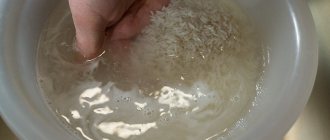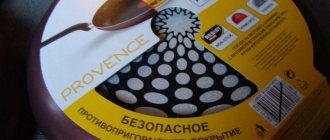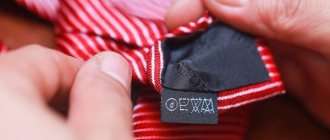Intex earplugs are ear plugs made of polyurethane foam that protect your ears from water and reduce sound volume by 30-40 dB. Soft earbuds They do not scratch the ears, are well suited for people with narrow ear canals and do not cause allergies - so it is not surprising that people want to use them for as long as possible.
Since Intex earplugs are reusable, people who use earplugs often have questions: “How to clean earplugs?”, “How to clean earplugs?” and “How to wash earplugs?” We will try to answer these questions today.
How to wash Intex earplugs?
To wash polyurethane earplugs, you do not need aggressive detergents: bleaches and chemically active powders. It is best to wash earplugs by hand, under a warm tap, using baby or liquid potassium hand soap. If the earplugs are washed clean, they will fully restore their original color.
Once you've cleaned the earbuds, place them on a towel and gently pat them dry. Then the earplugs should be given time to dry completely. As a rule, this takes 3-4 hours. After the earplugs dry, they regain their ability to change and restore their shape. Once dry, washed and dried earplugs can be used again .
Specialized care products
The use of special antimicrobial care products for earplugs and tips greatly facilitates the process of cleaning and disinfecting them.
- Cleansing wipes. Thanks to special alcohol-free impregnation, the wipes perfectly clean the earplugs of any dirt without harming their surface. A package usually contains 30 wipes. They are convenient to use both at home and while traveling. To do this, you need to carefully wipe the earplugs with a napkin after using them and put them in a storage container. For earplugs with filters, cleaning wipes provide ideal care.
- Cleansing spray. Liquid disinfectant and external cleaning agent. It can be odorless and with various flavors. After removal from the ear canal, spray the earplugs with spray and leave it to act for 1-1.5 minutes. Then carefully wipe the surface with a clean, moisture-absorbent cloth and place it in a container once completely dry. For earplugs with filters, you need to blow out the filters to remove the spray. The most convenient way to do this is with a special balloon for blowing out ear plugs.
Causes
Causes of rupture or perforation:
- Inflammation of the middle ear (otitis media). A middle ear infection often causes fluid to accumulate in the middle ear. The pressure of this fluid can cause perforation.
- Barotrauma. Barotrauma is stress on the eardrum when the air pressure in the middle ear and the air pressure outside are out of balance. If the pressure is severe, the tympanic membrane may rupture. Barotrauma is most often caused by changes in air pressure associated with air travel. Other events that can cause sudden changes in pressure—and possibly rupture of the membrane—include scuba diving and a direct blow to the ear, such as a car airbag.
- Loud noises or explosions (acoustic trauma). A loud sound, such as an explosion or gunshot, or a blast—essentially an overwhelming sound wave—can cause the membrane to rupture.
- Foreign objects. Small objects such as a cotton swab or hairpin can puncture or rupture the tympanic membrane.
- Severe head injury. Severe trauma, such as a skull fracture, can dislocate or damage the structures of the middle and inner ear, including the eardrum.
Is it possible to swim with earplugs?
What types of earplugs are suitable for swimming? Those that have waterproof properties. These are earplugs made of two materials: silicone and thermoplastic elastomer. Polyurethane foam and wax earplugs are not suitable for swimming.
Interesting materials:
How is ora translated in physical education? How is Dor Blue cheese translated? How is Toyota Gaia translated? How to reboot this tablet? How to restart the printer after refilling the Brother cartridge? How to reboot Redmi? How to restart a Samsung eco bubble washing machine? How to reboot the IWL220 terminal? How to re-register with a doctor? How to restart the VKontakte application?
Medical contraindications
Are earplugs harmful to sleep from a medical point of view? If you follow the rules of use and care for them, there will be no harm to your health. But it is still worth noting that contraindications for wearing earplugs are the presence of inflammatory processes and if a wax plug has formed in the ear canal. For any ENT diseases, inserts are not allowed to be worn.
It is also not recommended to spend the night in them often, as this increases the risk of an inflammatory process. If you feel that your hearing has deteriorated, you should not wear earplugs until you consult a doctor.
If you have chronic diseases associated with the auditory organ, wearing earplugs also requires permission from your attending physician.
Note! In addition, it is important to understand that constantly putting on plugs is dangerous. What is dangerous about earplugs is that when used frequently, they cause addiction; as a result, it becomes more difficult to fall asleep at night with a natural background noise.
Permanent use: expert opinion
Experts say that plugs should only be used in rare cases, such as when sleeping is impossible due to loud noises from neighbors or other noise sources. Experts are inclined to believe that the frequent use of such sleep protection from extraneous noise is not acceptable or necessary.
Constantly putting on plugs is permitted only if the person works in a place where their use is prescribed by safety regulations. Then, of course, you can’t do without them.
Note! Physiologically, with proper care and use, they are not dangerous, but psychologically they can lead to big problems. So the habit of sleeping in absolute silence, when it is impossible to comply with such conditions for a number of reasons, will eventually result in problems with falling asleep. And sleep disturbance is fraught with serious diseases.
It is also mandatory to refuse them in the presence of certain types of chronic ENT diseases, inflammation and excessive accumulation of earwax.
Is it harmful to sleep with earplugs, the answer is no. But it is worth following the rules of care and their application. Then the sleep will be deep and comfortable. Having chosen the appropriate option, you should not use it constantly, so as not to acquire a bad habit that will be difficult to get rid of in the future.
Design and sizes
Designs and colors of earplugs can be very diverse. For example, there are spherical, arrow-shaped, bullet-shaped, stamp-shaped options. There are models on sale with both translucent glossy and matte structures. The color of ear pads can be rich or muted, neutral (white, gray), pink, yellow, green, olive, orange, blue, blue, red, brown.
Among the models there are products with a white base and multi-colored stains in the form of wavy stripes and spots. The colors of other modifications resemble the texture of marble. The produced range can have “adult” and “children’s” sizes. For example, depending on the variety, the ratio of the length, diameter at the base and diameter of the tip of foam models can be:
- 22.8x11.2x9.9, 21.1x14.6x8.5, 20x14.2x9.7, 20.5x11.7x11x7 mm - for women;
- 23.7x11.6x10.9, 23x12.5x10.7, 22.5x12.5x11, 24x16x10.8 mm - for men.
Adult sizes are divided into 3 types: small, medium and large. They refer to the outer parts of the earplugs that fit onto the ears. Gradation can take into account not only the shape of models of a particular brand, but also the type of ears. For example, today you can buy two- and three-level options for people with wide ear canals. A height of less than 2.5 cm corresponds to size S (Small), a parameter of 2.5 cm fits size M (Medium), if the height is greater, this is already size L (Large).
Prevention
Follow these tips to avoid tearing or perforation:
- Proper treatment of otitis media. Be aware of signs and symptoms of infection, including ear pain, fever, nasal congestion, and decreased hearing. Children with otitis media often have their ears touched or pulled. Contact your ENT doctor for an examination to prevent possible damage.
- Protect your ears during the flight. If possible, avoid flying if you have a pre-flight allergy that causes congestion. During takeoffs and landings, try to keep your ears open. This can be achieved by yawning or chewing gum. Or use the Valsalva maneuver - gently blow air through your nose, pinching your nostrils and closing your mouth. Stay awake during takeoff and landing.
- Do not clean with foreign objects. Do not try to deep clean earwax with cotton swabs, paper clips, or hairpins. These objects can easily rupture or puncture your eardrum. Teach your children about the consequences of putting foreign objects in their ears.
- Protection from excessive noise. Wear earplugs or headphones at work or while relaxing if there is loud noise.
Caring for your hearing aid earmolds
To extend the life of an individual earmold, as well as maintain its good sound transmission, it is necessary to clean it at least 1-2 times a week with special means. The sequence of actions for caring for the earmold is as follows:
- Disconnect the earpiece with the sound guide tube from the hearing aid horn. This must be done very carefully so as not to damage the device.
- Dissolve the cleaning tablet in a special container with water. Wait until it is completely dissolved.
- Place the earmold with the sound guide tube into the container with the prepared solution and leave for 20-30 minutes.
- Remove the insert with the tube from the solution and rinse it in warm running water.
- Gently dry the earmold and tube with a soft, clean cloth.
- Dry the sound channel of the earmold and the sound guide tube using a special spray can.
- Place the insert on a soft, dry cloth overnight and let it dry. You can use a special electric drying device.
- Before attaching the sound guide tube and earmold to the hearing aid, be sure to check that they are completely dry.
In both the care of custom earplugs and the care of custom earmolds, it is also recommended to use special antimicrobial products: cleaning wipes and spray. After applying these products to the surface of the earmold, you need to let them sit for about one minute, and then wipe them dry with a dry cloth.
Extending the service life of earplugs and individual earmolds is also facilitated by daily hygienic care of the ear cavity.
bioTap wipes help keep the external auditory canal clean. With their help, you can easily and effectively remove excess earwax, clean the skin in the ear cavity and the auricle.











